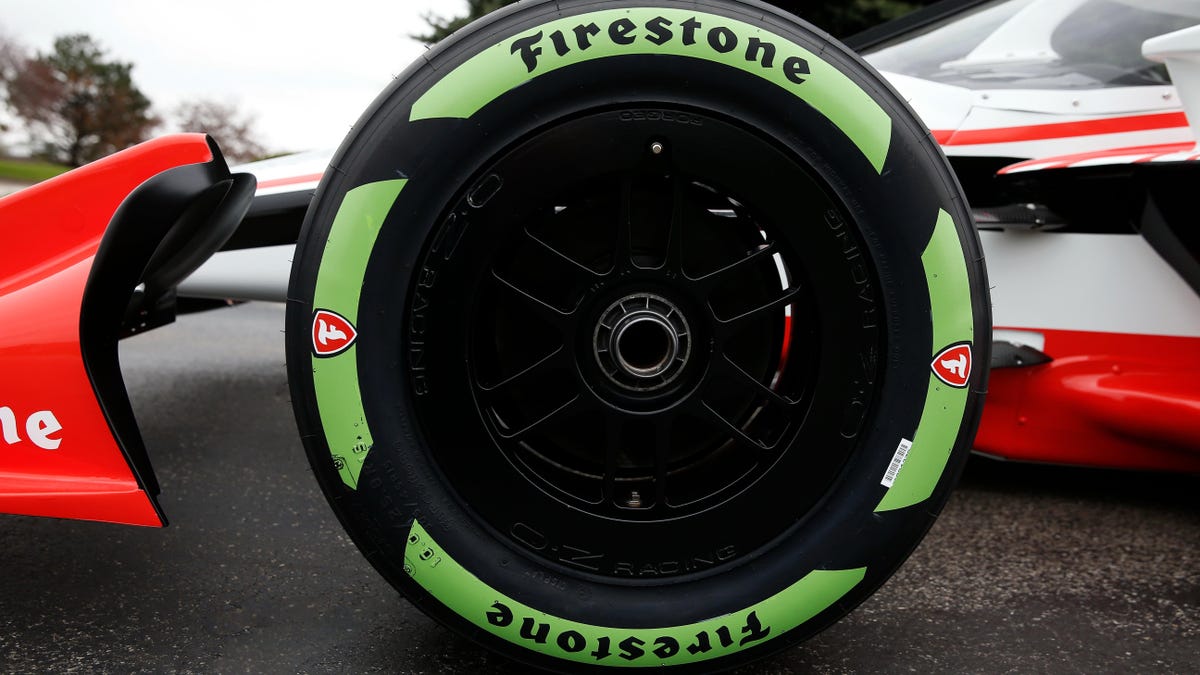Firestone's Sustainable IndyCar Tire Debuts Today at the Indy 500 Pit Stop Challenge

Firestone’s new sustainable race tires will be marked with a green stripePhoto: Bridgestone Americas
Today, IndyCar will make history by swapping out its traditional Firestone tires for new sustainably-made versions during the pre-Indy 500 pit stop challenge. Later this season, the sustainable tire compound will be available as an alternate tire choice for IndyCar teams at the Nashville Grand Prix.
Jalopnik sat down with Lisa Boggs, director of Bridgestone Americas Motorsports, to talk about these tires — which, according to her, have been nearly a decade in the making.
Firestone’s sustainable tire compound is derived from guayale, a desert-grown, heat-tolerant woody shrub found in the American southwest. “We’ve invested probably $100 million or more in this alternate source of rubber,” Boggs said.
The arid climate where guayale thrives is part of the appeal for Bridgestone. Guayule uses less water than many widely farmed crops (like corn). Its use could reduce the industry’s need for Brazilian rubber trees, and the fact that it grows in the U.S. could reduce the cost and emissions involved in transporting raw materials to faraway tire factories. As far as Bridgestone is concerned, guayale-derived tire compounds should be a near-perfect match for conventional rubber in terms of functionality.
“We expect the same performance from these sustainable tires as we do from the current race tires,” Boggs said. “The only difference is how this rubber is sourced.”
Getting guayule-derived tires ready to hit the track has been a long process of trial and error. After discovering that guayule has similar properties to current tire rubber, Bridgestone then had to learn how to harvest the plant, extract all the necessary resources, and convert the natural compound into a functional tire. Then, that tire needed to go through lab testing, track testing, and even off-road testing.
“We put these test tires through more rigorous conditions than you would ever see in a race,” Boggs said. The whole goal is to guarantee that the tire will be able to withstand any typical racing conditions — and then some. “We’ve had over a year’s worth of testing specific to running this compound on Indy cars,” she adds.
Further plans for the guayule-derived tire will depend on how the tire performs in the Indy 500 pit stop challenge and the Nashville street race. Currently, there’s no timeline for when this race tire technology could be brought over to road tires. But if all goes according to plan — as it reportedly has so far — we can expect the green-trimmed Firestones to become a regular feature in IndyCar racing.
Of course, that will all come down to a successful showing — but how do you define success? Boggs had a simple answer: “Success looks like a race where nobody knew there was a difference in the tires.”



